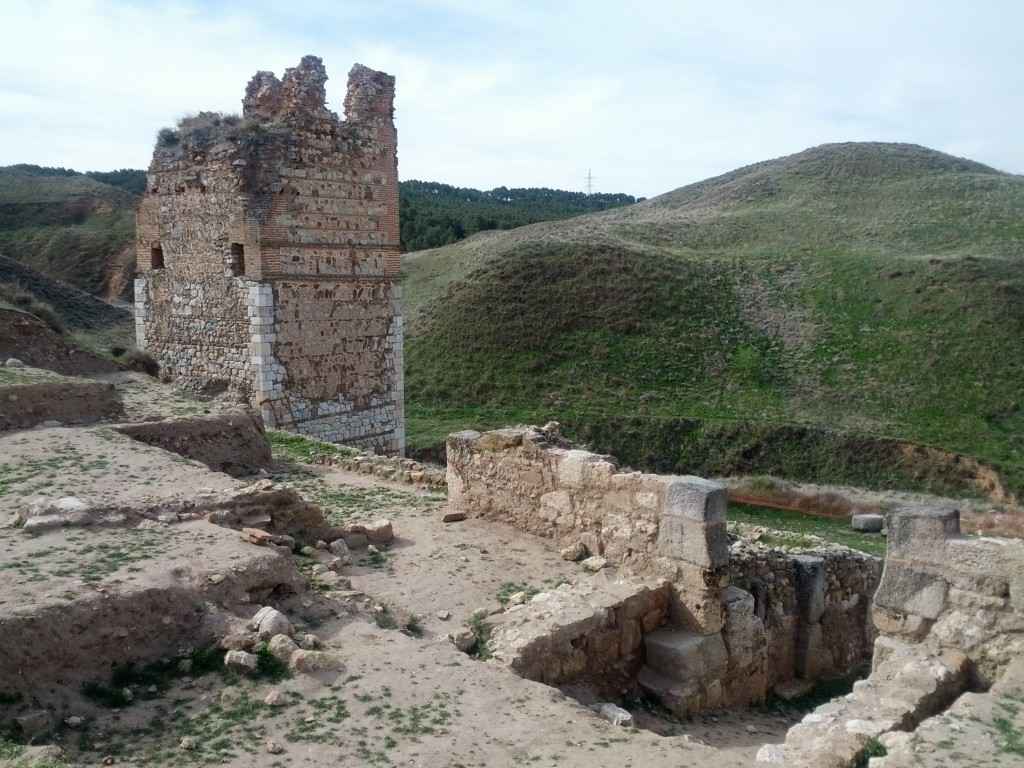Discover Alcalá la Vieja, the Muslim City of Alcalá in the 10th century
Al Qalat Islamic domination of the Iberian Peninsula cornered in the northernmost parts of the Peninsula a few Christians who maintained their independence. Muslims, new masters of almost all Spanish geography, required for a fortified post on the route from Zaragoza to Toledo, which together with the nearby cities of greater strategic value as Guadalajara or Talamanca, serve to support the raids periodically were directed against the Christian kingdoms in the north.
These fortifications were the function of preventing the descent of the enemy troops into the middle of the Tagus. They were, therefore, the two aforementioned cities and the strength of Al-Qul’aya, built on the banks of upstream Henares Complutum old, the three strategic points guarded and defended the territory from access by the Christian armies that tried down into the valley of Jarama from high Somosierra, or reach the valley of the Henares from Atienza and eastern parts of Castile, and from Zaragoza.
In the early tenth century, the new Arabic site Alcalá should not be more than a fortified watchtower small in size, judging by terminology with which it is named in the first news we have known Alcalá la Vieja. According to Bayan-al Mugrib, in 920, ruling in Cordoba Abd-al-Rahman III, the governor of Guadalajara defeated a large Christian Leon expedition had crossed the ports of the Central System with the intention of attacking Guadalajara. The site that beset, near Guadalajara, appears as al-Qul’aya reviewed, which can be translated as «the chateau.» Lévi-Provençal identified him as the little fort that preceded the one that gave the city its name today.
It seems that during the tenth century that little watchtower increased its fortifications, defensive accompanied this increase population growth and increased urban importance, especially if we consider the new name of Qal’at Abd-al-Salam, which translates to Castle Abd-al-Salam and even according to some authors such as Castle of the Prince of Peace. This name appears in Islamic chronicles, to relate the crisis of the Cordoba Caliphate in the early years of the eleventh century.
Would be in the summer of 1062 when Ferdinand I, in front of a large army, laid siege to the Muslim city, combating with mills to open a breach in its walls, forcing the king Al-Ma’mun of Toledo to become tax and pay him pariah to lift the siege, in exchange for the delivery of great riches.
However, despite the historic conquest of Toledo by Alfonso VI in 1085 and his mastery of the immediate region, the strength of Alcalá la Vieja continue under Muslim rule until 1118 the archbishop of Toledo, Don Bernardo, took his hosts the important enclave of Alcalá, where he managed to pay the plaza.
Visiting Alcalá la Vieja
Alcalá la Vieja doesn’t have any infrastructure to be accessed. It is located on the outskirts of Alcalá, in the area called Natural Park (see map below). No tourist office and visiting hours.
If you want to visit Alcalá la Vieja, you can do it walking or biking a hiking trail. It is a 8 km long round trip, ie approximate hiking time 3.5 hours, biking time 2 hours. Read more here.
More information:
Find Alcalá la Vieja in the map
Sigue disfrutando de Dream Alcalá:
- Telegram: Recibe nuestras noticias y contenido exclusivo (clic aquí).
- Newsletter: Recibe cada tarde un correo con nuestras últimas noticias (clic aquí).
- YouTube: Suscríbete para ver nuestros mejores vídeos (clic aquí).
 Sé tú el periodista: envíanos tus fotos o noticias a través de Telegram.
Sé tú el periodista: envíanos tus fotos o noticias a través de Telegram.

